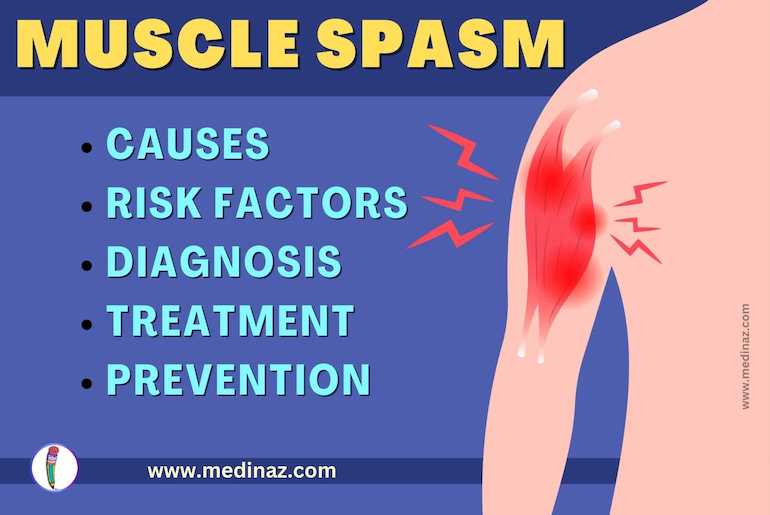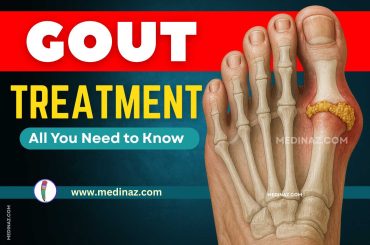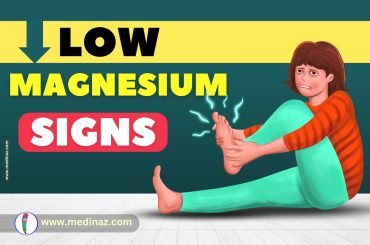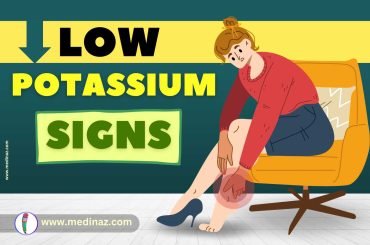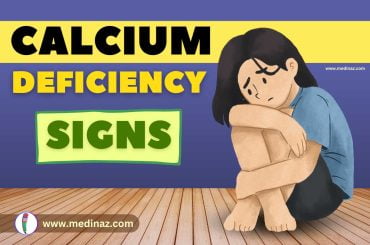Muscle spasms can be a real pain, quite literally. Whether they strike during a workout, in the middle of the night, or even while you’re just sitting at your desk, these involuntary contractions can be incredibly uncomfortable and disruptive. But what exactly causes muscle spasms, and how can you find relief?
In this comprehensive guide, we’ll explore the causes and symptoms of muscle spasms, as well as effective treatment options to help you regain control over your body. From dehydration and nutrient deficiencies to overuse and nerve issues, we’ll delve into the various factors that can trigger these spasms.
We’ll also discuss the warning signs to look out for and how to differentiate muscle spasms from other conditions. Finally, we’ll share a range of proven treatment options, including stretches, medications, and lifestyle changes that can provide much-needed relief. So, if you’re tired of being sidelined by muscle spasms, join us as we unravel the mysteries behind these pesky contractions and discover the path to a more comfortable, active life.
Table of Contents
What are muscle spasms?
Muscle spasms are involuntary contractions that occur suddenly and can affect various muscle groups in the body. These contractions can range from mild twitches to intense, painful cramps that can last anywhere from a few seconds to several minutes.
Muscle spasms can occur in any muscle, but they are most commonly experienced in the legs, feet, arms, and back. These spasms can disrupt your daily activities and even cause injuries if they occur during physical exertion.
Understanding the causes and symptoms of muscle spasms is crucial in finding the right treatment and managing these contractions effectively.
Muscle spasms can be categorized into two types:
- tonic
- clonic
Tonic spasms are characterized by sustained muscle contractions, while clonic spasms involve rapid, alternating muscle contractions and relaxations.
Both types can be equally uncomfortable and may require different approaches to treatment. Now that we have a basic understanding of what muscle spasms are, let’s dive deeper into the potential causes behind these involuntary contractions.
Causes of muscle spasms
Muscle spasms can be caused by a variety of factors, both internal and external.
Dehydration
- Disrupts the balance of essential electrolytes
- Sodium, potassium, and calcium are affected, impacting muscle function
Nutrient Deficiencies
- Lack of essential minerals, particularly magnesium and calcium
- Leads to increased muscle irritability and spasms
Overuse of Muscles
- Triggered by physical activities or repetitive motions
- Fatigued or strained muscles are more prone to involuntary contractions
Nerve Issues
- Pinched nerves or nerve damage can disrupt signals between nerves and muscles
- Results in spasms
Medical Conditions
- Diseases like multiple sclerosis and ALS
- Causes muscle spasms due to nerve damage
Medication Side Effects
- Certain medications may induce spasms as a side effect
Stress and Anxiety
- Psychological factors can lead to muscle tension and spasms
Poor Circulation
- Reduced blood flow to the muscles can lead to spasms
Cold Weather
- Exposure to cold can cause muscles to contract involuntarily
Pregnancy
- Hormonal changes and physical strain can lead to spasms in expecting mothers
Common symptoms of muscle spasms
Muscle spasms can present themselves in various ways, depending on the severity and location of the contraction.
- The most common symptom of muscle spasms is a sudden, involuntary muscle contraction that can range from a mild twitch to a painful cramp. These contractions can be accompanied by visible muscle twitching or bulging, which can be alarming for those experiencing them.
- Muscle spasms can also cause temporary muscle weakness, making it difficult to use the affected muscle.
- In some cases, muscle spasms can occur in clusters, with multiple contractions happening one after the other. This can prolong the discomfort and make it challenging to find relief.
- Muscle spasms can also be associated with muscle soreness or stiffness in the affected area.
- The duration of muscle spasms can vary, with some lasting only a few seconds and others persisting for several minutes.
Now that we know the symptoms, let’s explore the potential triggers and risk factors that can contribute to muscle spasms.
Muscle spasm triggers and risk factors
Muscle spasms can be triggered by a range of factors, and identifying these triggers is essential in preventing future occurrences.
Physical exertion: One common trigger is physical exertion or overuse of muscles. Intense workouts, repetitive motions, or long periods of physical activity without proper rest can strain the muscles and increase the likelihood of spasms.
Dehydration: As mentioned earlier, dehydration is another significant trigger for muscle spasms. When the body lacks adequate fluids, it can disrupt the balance of electrolytes, leading to muscle contractions.
Inadequate nutrient intake: particularly minerals like magnesium and calcium, can also increase the risk of muscle spasms. These minerals are crucial for proper muscle function, and their deficiency can lead to muscle irritability and spasms.
Medications: Certain medications, such as diuretics, statins, and antipsychotics, can also increase the risk of muscle spasms as a side effect.
Others: Other risk factors include age (muscle spasms are more common in older adults), pregnancy (due to hormonal changes and increased weight), and medical conditions like diabetes, thyroid disorders, and kidney disease.
How are muscle spasms diagnosed?
Muscle spasms are sudden, involuntary contractions of one or more muscles that can be painful and disruptive. Diagnosing the underlying cause of muscle spasms is essential for effective treatment and management. The diagnostic process is a comprehensive approach that includes a careful evaluation of the individual’s symptoms, medical history, physical examination, and possibly a series of specialized tests. By pinpointing the root cause, healthcare professionals can develop an appropriate treatment plan tailored to the patient’s specific needs.
Symptom History and Physical Examination:
- Assessing the individual’s full history of symptoms
- Understanding the onset, duration, and frequency of the spasms
- Identifying the affected muscles and circumstances surrounding the spasms
- Obtaining personal and medical history to rule out underlying factors
Blood Tests (if needed):
- Checking levels of sodium, potassium, calcium, and magnesium
- Creatine phosphokinase (CPK) blood test to detect muscle breakdown
Imaging Tests (if there’s concern for arteriosclerosis):
- Ultrasound or MRI to assess blood vessels for narrowing
- Computed tomography (CT) angiography to assess blood flow in the arteries
Electromyography (EMG) (if needed):
- Testing the muscle’s response to electric stimulation
- To rule out nervous system disorders such as MS and ALS
By following this process, medical professionals can gain a comprehensive understanding of the problem, ensuring that the treatment is effective and aligned with the patient’s condition and needs.
How to prevent muscle spasms
Preventing muscle spasms involves adopting a proactive approach to your overall health and lifestyle.
Staying hydrated is crucial in maintaining the balance of electrolytes in your body and preventing dehydration-related muscle spasms. Make sure to drink an adequate amount of water throughout the day, particularly during physical activities or in hot weather. If you engage in intense workouts or prolonged physical activity, consider consuming sports drinks or electrolyte-rich fluids to replenish lost minerals. (ref)
Eating a balanced diet that includes foods rich in essential minerals like magnesium, calcium, and potassium can also help prevent muscle spasms. Incorporate foods such as leafy greens, nuts, seeds, dairy products, and bananas into your diet to ensure an adequate intake of these minerals. If necessary, you may consider taking mineral supplements under the guidance of a healthcare professional.
Stretching before and after physical activities can also help prevent muscle spasms by warming up the muscles and increasing their flexibility. Focus on stretching the muscles that are prone to spasms, such as the calves, hamstrings, and quadriceps. Regular exercise and maintaining a healthy weight can also reduce the risk of muscle spasms by strengthening the muscles and improving overall muscle function.
Natural remedies for muscle spasms
When it comes to managing muscle spasms, natural remedies can provide significant relief.
Applying heat or cold packs to the affected area can help relax the muscles and alleviate pain. Heat packs can improve blood flow to the muscles, while cold packs can reduce inflammation and numb the area. Experiment with both to see which works best for you.
Massaging the affected muscle can also help relieve muscle spasms. Gently knead the muscle using your fingertips or palm, applying moderate pressure. You can also use essential oils like lavender or peppermint, known for their muscle-relaxing properties, during the massage. Make sure to consult a professional or do thorough research before using essential oils, as they can cause adverse reactions in some individuals.
Incorporating relaxation techniques into your daily routine, such as deep breathing exercises, yoga, or meditation, can help reduce muscle tension and prevent spasms. These practices can promote overall relaxation and stress reduction, which can have a positive impact on muscle health.
Medical treatments for muscle spasms
In severe cases or when natural remedies are not providing sufficient relief, medical treatments for muscle spasms may be necessary. Your healthcare provider may prescribe muscle relaxants to help alleviate the spasms and reduce muscle tension.
You may consider taking over-the-counter pain relievers, like ibuprofen, acetaminophen, or naproxen.
These medications work by blocking the nerve signals responsible for muscle contractions. However, it’s important to note that muscle relaxants can have side effects and should be used under the guidance of a healthcare professional.
In some cases, a procedure called trigger point injection may be recommended. This involves injecting a local anesthetic or corticosteroid into the trigger points (areas of the muscle that are particularly sensitive or prone to spasms) to relieve pain and relax the muscle. Trigger point injections are typically performed by healthcare professionals and can provide targeted relief for muscle spasms.
Physical therapy for muscle spasms
Physical therapy can be an effective treatment option for muscle spasms, especially if they are recurring or severe. A physical therapist can assess your muscle function, identify any underlying issues or imbalances, and develop a personalized treatment plan to address them.
Physical therapy may involve a combination of stretching exercises, strengthening exercises, and manual techniques to improve muscle flexibility, strength, and overall function. This can help reduce the frequency and intensity of muscle spasms and improve your quality of life.
In addition to in-person physical therapy sessions, your physical therapist may also provide you with a home exercise program to follow. This program will include specific exercises and stretches to target the muscles prone to spasms, allowing you to continue your progress and prevent future occurrences.
Lifestyle changes
Making certain lifestyle changes can play a significant role in managing muscle spasms and reducing their frequency.
First and foremost, it’s important to listen to your body and avoid overexertion. Pay attention to any signs of muscle fatigue or discomfort and take breaks when needed. Incorporate regular rest days into your exercise routine to give your muscles time to recover and prevent overuse.
Maintaining good posture and practicing proper body mechanics can also help prevent muscle spasms. Improper posture, particularly when sitting or standing for long periods, can put unnecessary strain on the muscles and increase the risk of spasms.
Make sure to sit and stand with your back straight, shoulders relaxed, and feet flat on the ground. Using ergonomic furniture and equipment, such as an adjustable chair or keyboard, can also promote good posture and reduce muscle strain.
Managing stress levels is another important aspect of preventing muscle spasms. Stress can contribute to muscle tension and increase the likelihood of spasms. Find healthy coping mechanisms for stress, such as engaging in hobbies, spending time with loved ones, or practicing relaxation techniques.
Prioritizing sleep and ensuring you get enough rest can also help reduce muscle tension and promote overall muscle health.
Conclusion:
Living with muscle spasms can be challenging, but with the right knowledge and treatment, you can regain control over your body and minimize their impact on your daily life. By understanding the causes and symptoms of muscle spasms, you can identify potential triggers and take preventive measures. Natural remedies, such as heat or cold packs, massage, and relaxation techniques, can provide relief for mild to moderate spasms. In more severe cases, medical treatments like muscle relaxants or trigger point injections may be necessary. Physical therapy and lifestyle changes, such as proper hydration, balanced nutrition, and exercise, can also play a crucial role in managing it.
If you’re experiencing frequent or severe muscle spasms, it’s important to seek professional help. A healthcare provider or physical therapist can evaluate your condition, provide a proper diagnosis, and develop a personalized treatment plan tailored to your needs. Don’t let muscle spasms keep you sidelined from the activities you love. Take charge of your muscle health and explore the various treatment options available to find the relief you deserve.
Check other important Medinaz Health Blogs
A Visual Learning Platform

